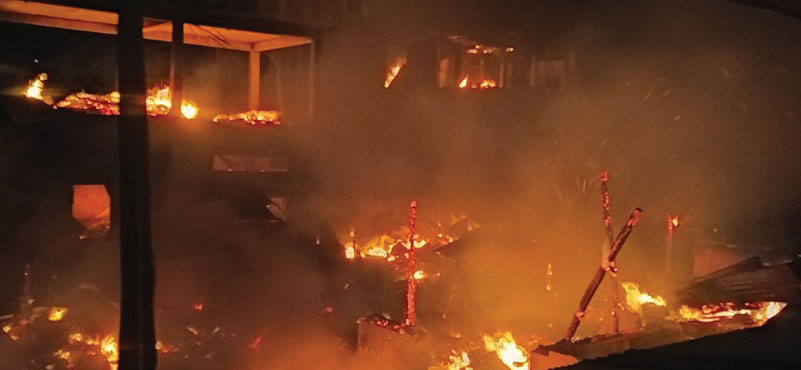For friends of over 40 years, to meet formally is a challenge: where does one draw the fine line between structuring a story and meandering into recollections of growing up in our respective fields over the last many decades. Where does the buck stop? Sifting through more than an hour and half of conversation, putting together an enigmatic personality such as Aman Nath, here is a condensed version of what we were able to discover is happening to Indian hospitality and tourism, among his other passions. Read on.
To begin our conversation, I am afraid I must resort to a cliche: You are surely a man of many parts, but how do you see yourself primarily – a business man, a hotelier, an author, a poet, an architect, or a traveller, or simply as a detached faqir? How do you shift gears from one role to another and seem equally passionate under whichever hat you wear?
I believe that whatever one does one must do it passionately, or just not do it. I am saying this to you, because I know you follow the same instinct and persuasion. When you got into the business of travel-trade exhibitions, you did it to the hilt, and there was nobody better than you, because you were driven by passion. When other people came in, you just walked out of it and never looked back.
We are all many many things rolled into one, and if every part of us can slide into the other, with an effortless ease, then we have integrated our interests with our need for a livelihood. Creativity is all one and the same thing when it is driven by someone who believes in this renaissance way of living a life.
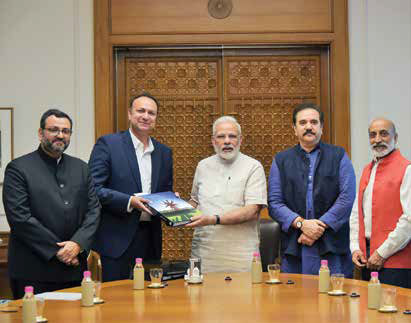
But Neemrana was surely a very daunting pathbreaker which needed guts
Yes, the first time I saw Neemrana, I knew it was going to be utterly magical. Nobody else believed this to be true, but to me it did not matter. Today if you ask me, did I evaluate it in terms of returns – no, I never did. The thought didn’t even remotely occur to me, when it was purchased. Honestly, I didn’t even have a concept of what would become of it. But I knew it wouldn’t be run of the mill.
I was born into hardworking, entrepreneurial business family who were refugees from Lahore. So I must have an intuitive survival and business sense. But as a child I would never count the coins. Our parents made the home seem bounteous even when they were setting up industry from a zero – or actually a minus, because they paid back their pre-Partition loans. As an adult too, I have never looked at the bottom line. With persistent hard work, it naturally all keeps adding up, instinctively – but with an alert sixth sense, I must add.

Also, I live totally in the present. I am not a dreamer of past grandeur and lost opportunities. If you have an idea you must mould it into reality right away. I’d wanted to do a place where I could write books and that was it. This was the time everybody was doing farmhouses because they had funds for a second home. You also did one, remember? I never thought I had the money to do a farmhouse because it would be just wasteful for me. I was not going to do agriculture and I was not going to make a fancy house to call people to party because I had ‘arrived’! I still haven’t arrived in that sense. But my forward direction was always very clear Whatever I would do, would be on my own steam and within my own means, never forsaking passion. I guess I am a bit different from those corporates who like to lean on consultants and loans and are lazy on their original thinking, inventiveness and drive.

So, whatever you did with the first Neemrana, how many more times were you able to evoke the same feeling of the joy of waking up the ruins like fairytale romances?
For me, it is totally exhilarating to see a gorgeous ruin and imagine how it must have been. Or how it will be with today’s advances in materials and technology. We can make mediaeval ruins much better than they ever were. For me, a ruin is perhaps like an unopened carton of the best labels for an alcoholic. Ha ha.
Neemrana has done some 32 projects all over India, but the core of this feeling was actually pre-Neemrana. The idea of the hotel was still to be born, two years later in 1986.
What is this sensibility that you have brought to hospitality?
It is you who should tell me because you have experienced it from the outside! You see my house where we are sitting and you see the hotels – you can spot that there is a thread, a continuity. I did not ever begin with the idea to make a hotel. I saw the splendid Neemrana ruins, out of which I saw very clearly that I could build something romantic, a sort of fairytale thing when you see a light on the hill and go in to be welcomed with a hot soup. My fantasy, was to only do up a part of the ruin, with perhaps a room for myself where I needed to stay and wake up while the restoration of Neemrana was ongoing. Malabar Mahal was created. Then we made one for OP and Lekha as they came infrequently and almost never stayed overnight. I have a bad sense of time – since I have a heightened sense of space and my mind never sleeps, one thought or action just leads to another, and there could be no stopping in the waking up of the entire Neemrana Fort-Palace.
But you had never had a hotel background. And it never done a hotel before?
I don’t think that a pioneer gets to do something, even before it’s been done! The Tatas had not done steel and you hadn’t published a magazine, but one learns the ropes more willingly on the job than when they are taught to us. Certainly, nobody had done a hotel in my family. And even now I don’t think of myself as a hotelier, perhaps an accidental one! For which reason, I had called Neemrana a ‘non-hotel’ hotel, when we began. Because it was never built to be a hotel. Its original purpose was to keep people out and now we were to welcome them in. Of course, I did not realise how complicated it would be to run the kind of hotels that Neemrana went on to create. But our young team headed by our CEO Sonavi Kaicker, have contemporised many of the hotel operations which makes us a heritage hotel chain with one of the most modern and systematic ways of working behind the scene. Today when we employ people, they are completely lost and say “Oh God, this is a city”, but then they get their bearings eventually, as do our guests.
At least to my larger understanding, there would be exceptions, but heritage hotels, the palace or the fort, already existed. These came out of some tangible assets that already existed. In your case, the opposite is true! Most times, there was nothing to behold…
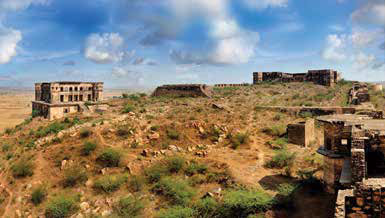 The heritage hotels you are talking about and the people that you and I know, were born into those palaces. Whether they got the idea to commercialise them into hotels early or late, or after seeing Neemrana, which gave them the courage, I can’t say. But they were to the manor born. I may have woken many ruins but none is my home. I live on the road, so to say – between places!
The heritage hotels you are talking about and the people that you and I know, were born into those palaces. Whether they got the idea to commercialise them into hotels early or late, or after seeing Neemrana, which gave them the courage, I can’t say. But they were to the manor born. I may have woken many ruins but none is my home. I live on the road, so to say – between places!
They were ‘to the manor born’, yes, so?
You and I are refugees, I am not re-creating any past, because, our past was in Lahore. But I am touching a broader, grander history.
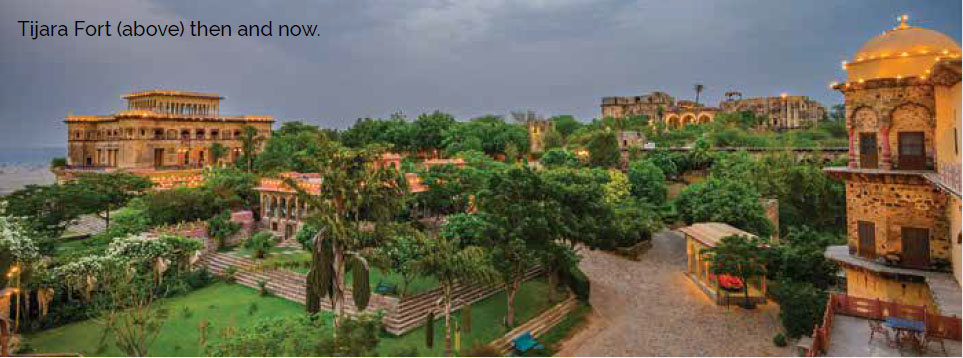
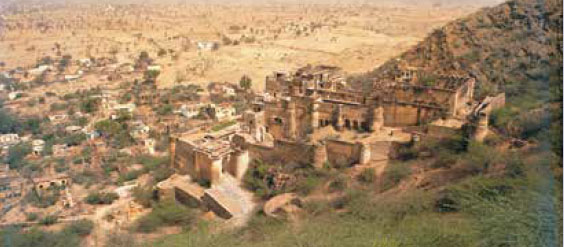
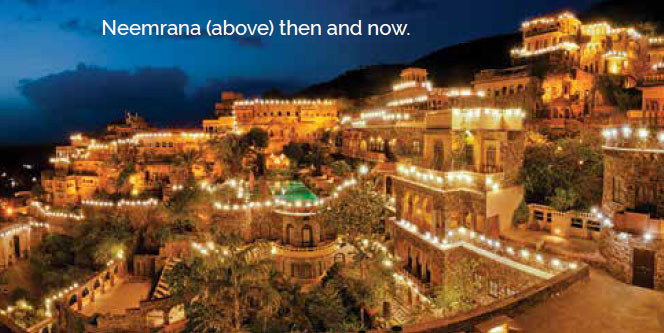
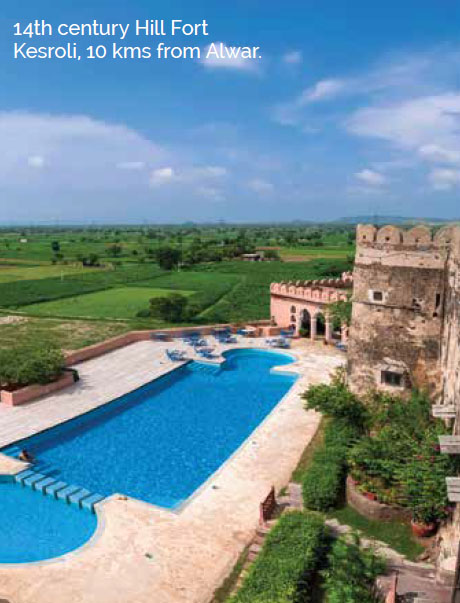
Most of heritage hotels, as far as I know, were not in ruins when they were picked up to become hotels.
No, they were not. Because they were lived in. But the royalty and nobility converted and extended them for this changed end-use for hospitality. Some were converted on scanty budgets but big on taste, and many of them with big money but overdone.
The thing that alarms people the most about Neemrana Hotels is their taste and simplicity. Not one loan was ever taken. Nobody believes this. Money is not a substitute for perseverance. Many people wrongly think it is all about money but that is a nouveau riche idea. So, we have often met big business people saying, we will give you 500 crores. Together, we will build this and that. But why would anybody take 500 crores if they do not want to get buried under heavy loans and incumbrances? Not to mention all the kind of scandals we continue hearing about big money. So, the real story about Neemrana is that it is a very hands on. I have enjoyed doing the architecture, the gardens, finding novel solutions for the plumbing and carpentry. I enjoy everything, you know, and I am still free to do what I want to really do and to produce all the books I managed to do.
Tell us about Aman the author!
I have written some 18 books – some for bread and butter – but some seminal ones too. I was asked to do the centenary book of the Tatas. I later gathered that they had interviewed nine people for the book. Many of them were big time editors of business magazines. But Tatas found they were just looking into facts, figures of industry. They did not have the vision or the bandwidth to see the Tatas, 360 degrees.
Would this Tata book be another case study of passion carried forward. So maybe, that is what inspired you and inspired them.
They insisted and called me to Mumbai when I had no intention or time to do the book. We talked, and I just said to them, you are so fabulous that you do not see yourself from a distance. I am going to do two pages of how I see it for you, then you can get someone to do it.
And some of your other books?
After that, I did one for Cyrus Mistry and 150 years of Shapoorji Pallonji. They wanted the same size and feel. It is also a history of their group. Before this I had done the book that the President of India gives to every visiting head of state.
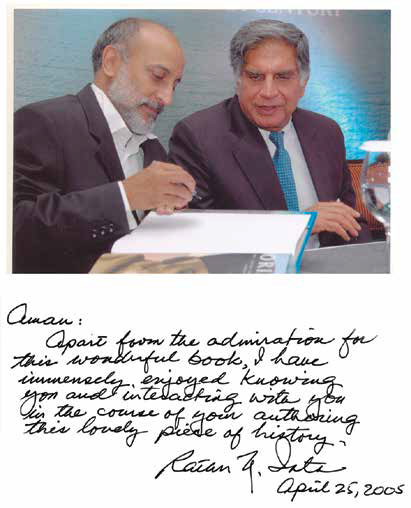
What is the title?
Dome Over India. That is a substantial book reversing many notions of colonial history. When President Narayanan was the incumbent, his daughter Chitra called me to a family lunch – her father’s birthday in October. After an intimate meal with only about eight people, the President walked me into the garden, put his arm around my shoulder and said, ‘I want to ask you a favour’. I said, you are the President of India and you want to ask me a favour? He smiled, “Yes, I want you to do a book for me.” Because he had seen the Jaipur book, which is considered a legend among large format books because it has sold 35,000 copies and Christie’s picked it up to distribute it among their first Indian books. And it still goes on. So, I said, but aren’t you retiring now? He said, yes. Then I was commissioned in January 2002 when he was to retire in September. There were eight months left. It was crazy to research, write, design and produce a book in six months – to then print it in two! The President said he would support me on everything, which he did. So, if I wanted a photograph from Karnataka, they would ring up from Rashtrapati Bhawan and the next day the collector asked the Superintendent of Police to get it shot and it would arrive magically, because it was the President who was asking. Of all my books that I have done, the most amazing reviews that I got were for that book.
For the Dome over India?
Yes. From the Mackintosh Institute of Architects and the British Journal of Architects saying that a book like this could no longer be produced in England…that my Indian viewpoint was truly justified. And when I went there to talk about the book, the Lutyens Trust was excited that a book of this scope and dimension had come out. But little did the English realize that much of it was not favourable to Lutyens or to them. Lutyens was more of an imperialist, which he was allowed to be, but he was talking down to the Indians, the craftspeople and everyone. I have no particular like or dislike for any Englishman, but the great hero of what we refer to as New Delhi was Lord Hardinge, not Lutyens.
So, all this talk of a Lutyens’ Bungalow Zone?
Absolute rubbish! The concept didn’t exist then, he has not even made one bungalow in what we wrongly call The Lutyens Bungalow Zone. How silly is that? When Emperor George V and Queen Mary were asked if their new capital could be called Georgegarh or Marybad, they humbly suggested New Delhi. They would be horrified how we’ve called it now. Robert Torr Russell made some 4,000 bungalows, Connaught Place, Eastern and Western Court, Safdarjung Airport – but no one has heard of him.
How did this aberration come about?
We just do not know our own history. A man who neither chose the site where Rashtrapati Bhawan is built, nor the materials, neither the Indianised designs in which it was raised. He didn’t want to evoke the Mughal gardens but a natural British one nor plant Indian trees – so everything he said, it got a solid, no, no from Hardinge who pushed him to agree to an ’Indian‘ brief, because he said he was the client, as Hardinge represented the King. And he made Lutyens change his views on everything. So, who should claim the credit? The designer who did not have his say, or the client who had insisted with a detailed brief that his was the last word?
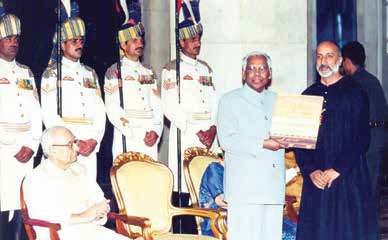
But more on the books’ side, tell us about the legendary Jaipur one.
The Jaipur book, which I did it for India Book House. They had wanted a quick book, a selling book for Rs. 400. I met with them, but I said you have got something so fabulous as a subject with a captive tourist city audience and beyond, I want to do it my way. I like others not to spoil my vision once they have commissioned me. It is no point getting bullied into mediocrity. But Padmini Mirchandani of India Book House and Meera Ahuja became the best support that Indian publishing could find in our times.
Where does your obsessive restoration fit into your scheme of things?
My work is with unlisted buildings, not with State or National treasures. In India, there was zero consciousness of that. Now since Neemrana have done more restoration than any other private sector entity in heritage tourism, then at least this change is something that has happened in my life.
Look at the difference Neemrana made – and to how many lives; I mean, how many masons, how many carpenters, how many people in how many parts of India? That for me is the joy of actually doing something. My understanding or lesson is that history is also that which lasts with its physical architectural symbols into posterity.
So, you are seeing yourself in this sense as a historian?
I suppose. But the thing is that one will at least have left behind something concrete to remember, that will last and outlive us. If one wants a study of tourism in India, they can look at all your back issues of Destination India. They are a whole physical body of work in themselves. I am talking of posterity now. I think the study of history gave me a very heightened consciousness of posterity – of doing things which survive beyond us.
So, what exactly are you doing when you interpret this history?
When I do a book, I guess it is my co-mingling of a new perspective in words and pictures from my unique vantage point in history, my education, my exposure to correct that which had been falsely recorded.
Even the House of Tatas is documentation of a serious kind!
Certainly, I mean, we can laugh and chat together, but when you read such books, it is like what Ratan Tata wrote: it is considered the best corporate book in the world. Few can imagine that a book like this can be written. And even the Tatas, when the book came out, it was done in Singapore, they got the first copy. I was in Delhi. Dr. Irani called me and said, Mr. Aman Nath, what have you done? So, I thought to myself, oh dear, I hope the cover isn’t printed upside down. I thought maybe I have blundered somewhere. I said, Sir, I haven’t seen the book yet. I have no idea, is something the matter? He said, no, what have you made of the Tatas? We just stood around the book in silence, bewildered by what you have produced. So, I said, well, you must be very modest to not know what you are.
Tell me about Aman the poet, the faqir?
In school I was only known as an artist academic, athelete. In college, I became even better known as a poet. I won the annual literary prize in St. Stephen’s for three out of five years. But I was stuck with studying in history: in life also, I suppose I chose to remain stuck with history! now I don’t mind that the Principal could not transfer me to study English Honours.
I still write whenever I want. I have got hundreds of my poems. When people look at them and tell me how competent they are, I say: Why should they be incompetent? I mean, poetry has been my first thing, but it remains private. Poets understand subconsciously what passes their times. Poetry teaches submission to the ways of the cosmos, surrender to love. It is about detachment and arrival into another space – a void which is a plenitude. I was privileged to feel this as an adolescent.
And, Aman the Mentor
I am a learner, more than a guru! There are many, many people, who are managing the operations of our hotels. But the dedicated team that does restoration/construction, or their successors, have been with us from some 43 years. Now I can instruct them on the phone and things happen – and there is also WhatsApp video for support. I have been asked to lecture in more than 50 architecture colleges and I find it amusing when they insist please come and talk, come and talk. I keep telling them, I am not even an architect but they, they still introduce me with: We are very honoured to have architect Aman!
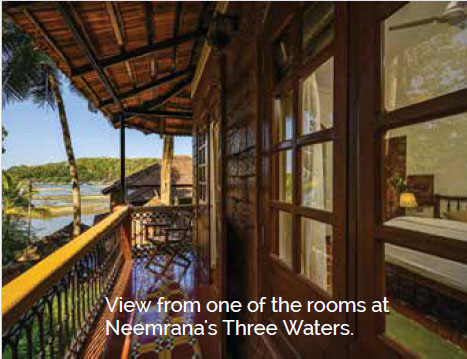
Is there an architect in you also?
Well, if you build continuously for some 40 plus years now, you are better off than the five years of education that students get. But building a shelter for survival must be an instinctive act too.
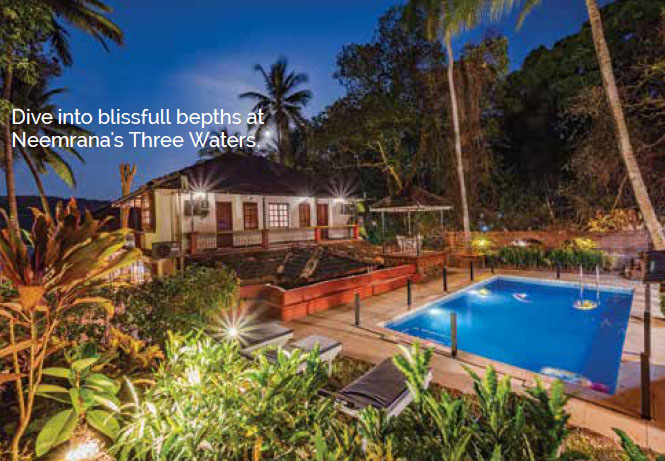
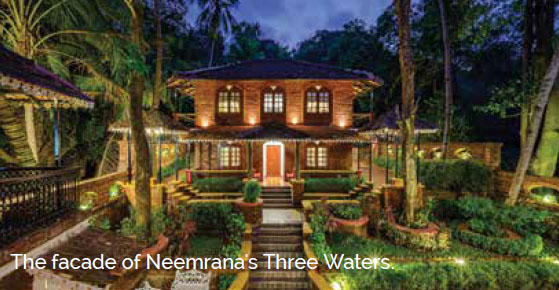
Is this not daunting, somehow?
People do ask, but how do you have the courage to do these projects? I think that it is about one’s aptitude and the active volition. It’s about changing the mindsets of people around you. Not just about ruins but altering the mindset of the travellers too which Neemrana has done. People used to go to Thailand and Singapore for weddings. We had 90 weddings across our hotels last year; the best and the most extraordinary weddings. Who would have thought that you could buy a property for a few lakhs and earn more than 40 lakhs a day from it! This has given me the joy of a lot of spontaneous effort, but it also needed an undaunting vision. You either have it or you don’t have it. There are people who are ready to chicken out of every situation.
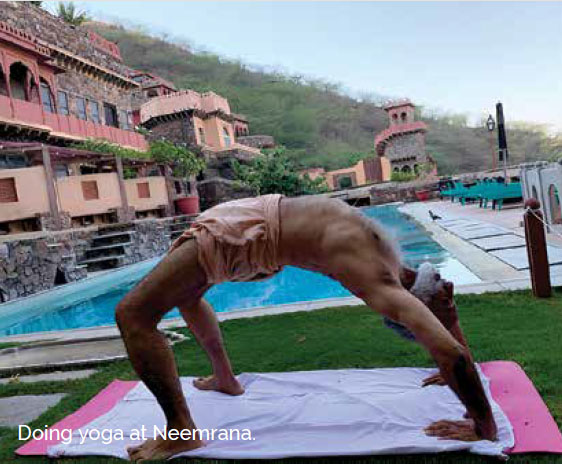 And, the Indian tourism scene, what’s trending?
And, the Indian tourism scene, what’s trending?
What happened that in the early years when India opened to tourism, we were trying to present a sort of manicured – pedicured India where people can come and put their foot on a place and eat with silver forks and knives. Because people were terrified of India as the country where you would get malaria, or other epidemics. We were out to tell the world that, oh, we are almost like you, so that they could come, could travel, see, eat food here, fly our airlines and not think of death. You could not drink here easily – water or alcohol. I am talking of the sixties! So, that mindset stayed too long, which India and the world eventually changed with time. Tourism today is all about people wanting to see the difference. Today we are promoting rickshaw rides and street food.
I don’t want to take any brand names here but many of them build what their brands abroad demands of them. When you wake up in many such hotels, you don’t know where you are. You could be anywhere. It is the same off-white bed and off-white walls with just any painting on the wall. All that is pleasant and efficient, the bathroom too looks the same. It is that aseptic and sanitized India that is presented.
 And tourism was also so busy hiding the real India from the world for too long. People wanted to see the real thing. Neemrana came at that juncture. I have had people come from the fanciest hotels and say, they had been promised we would never see poverty anywhere. I asked, why are you travelling? I mean, why would an American come to India and hope to never see poverty? So, they would come with blinkers on, to see an artificial India?
And tourism was also so busy hiding the real India from the world for too long. People wanted to see the real thing. Neemrana came at that juncture. I have had people come from the fanciest hotels and say, they had been promised we would never see poverty anywhere. I asked, why are you travelling? I mean, why would an American come to India and hope to never see poverty? So, they would come with blinkers on, to see an artificial India?
But soon they realised that India is a very happy place. It is not miserable. Like they could be rich and equally miserable. As Dominique Lapierre used to say: If you want to see real happiness go to the City of Joy, where in a slum, there is more joy than there is in Beverly Hills.
I think Neemrana has broken that barrier to the third degree of tourism where you could go into real India in an unashamed way. And we cannot put blinkers on travelling people’s eyes anyway, so that they see only selectively. They must see all and then chose to retain what was memorable for them. Some 300 people work for us in Neemrana. Guests now go and see their houses with joy. Our people’s lifestyles have changed. They have double storeyed places which they rent. Their kids have gone to colleges. That for me is the real joy that you formed the people who carried your brand to enviable heights! We kept all our team through Covid.
So, how do you see the Indian narrative going forward?
Now that we have understood that all of India can be a carnival, a continuous circus, where any Fellini can randomly place his camera and shoot living magic, our innocence in the field of tourism, is gone. Indian tourism needs to work intuitively from the heart. Consultants and executives who study the subject academically in fancy institutions but know not what tourism is about, can take a break. Because they are not alive or sensitive to being Indian. They are still in the colonial psyche mode.
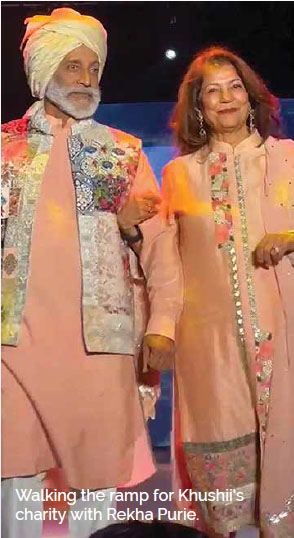 Why are we priding ourselves in serving some exotic French pudding, or croissants when the real thing is available in every bistro of France – where it is so much better. Let us stick to our lachha parantha and malpuas, our romali roti and puris.
Why are we priding ourselves in serving some exotic French pudding, or croissants when the real thing is available in every bistro of France – where it is so much better. Let us stick to our lachha parantha and malpuas, our romali roti and puris.
So, I think the pride in being Indian is now manifest even in things such as our food – people are pulling out, like the recent menus of millets and choicest Indian cuisines that one had never heard about before. You have seen how much we have swung the Indian way. Although my daughter Aadya Nath is studying hoteliering in Switzerland, I hope it gives her new eyes on India, not just more complexes like the students who come back only to replicate the West.
What would be the one or two factors you think, which are making India swing the other way now?
The India of today is already being seen as bold and brave. It needs guts to do the kind of things this government has done today. When you travel anywhere in the world, you are so much better received as an Indian than you ever were. And within India, the pride of being Indian, this act of digging up the names of all the freedom fighters – think of all the Amrit Mahotsav families, how proud they are that they had an ancestor who fought for the country and is valued for by the citizens.
Those millions of innocent smiles frozen in private discoveries, is where our future is headed.


